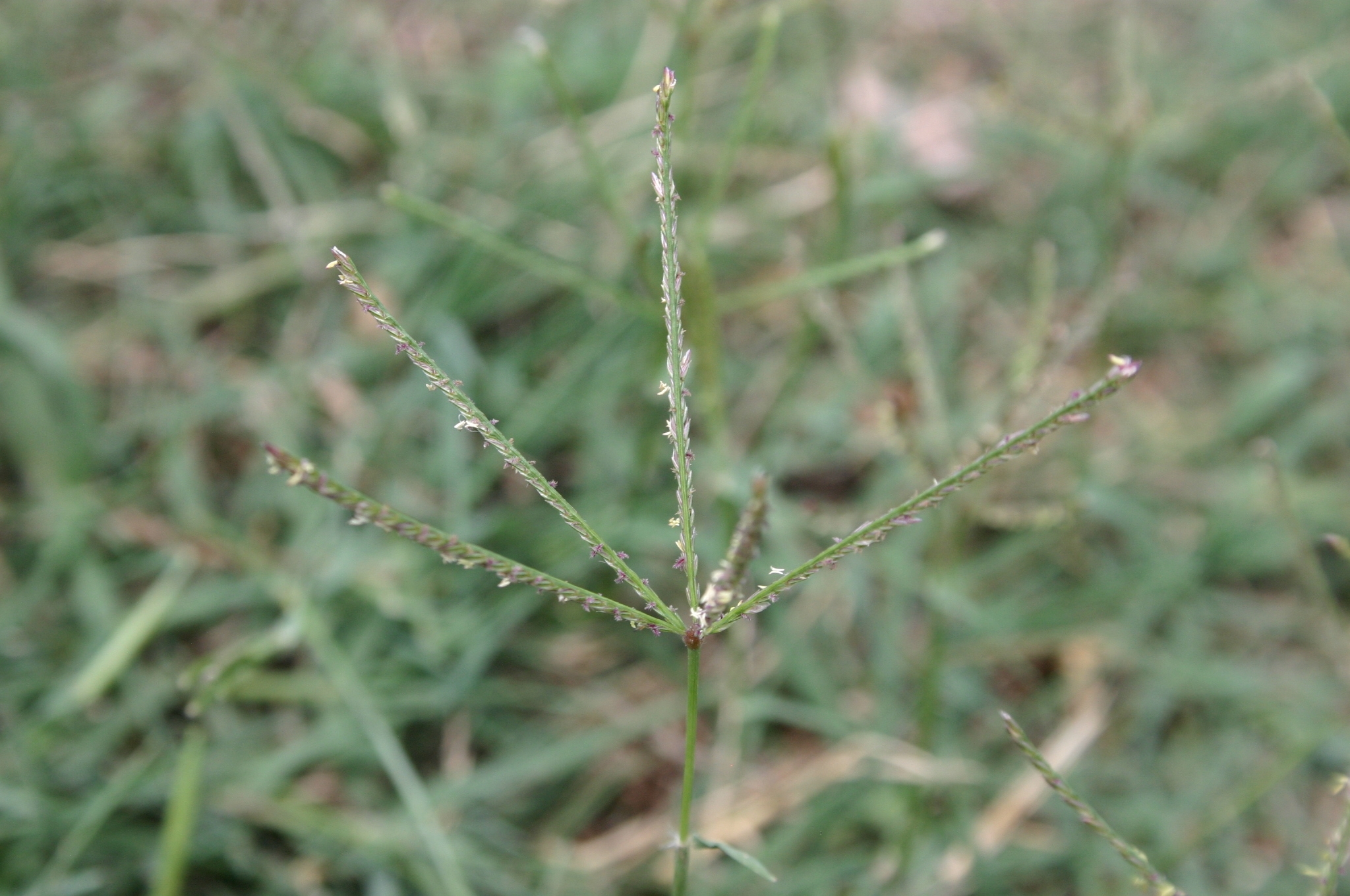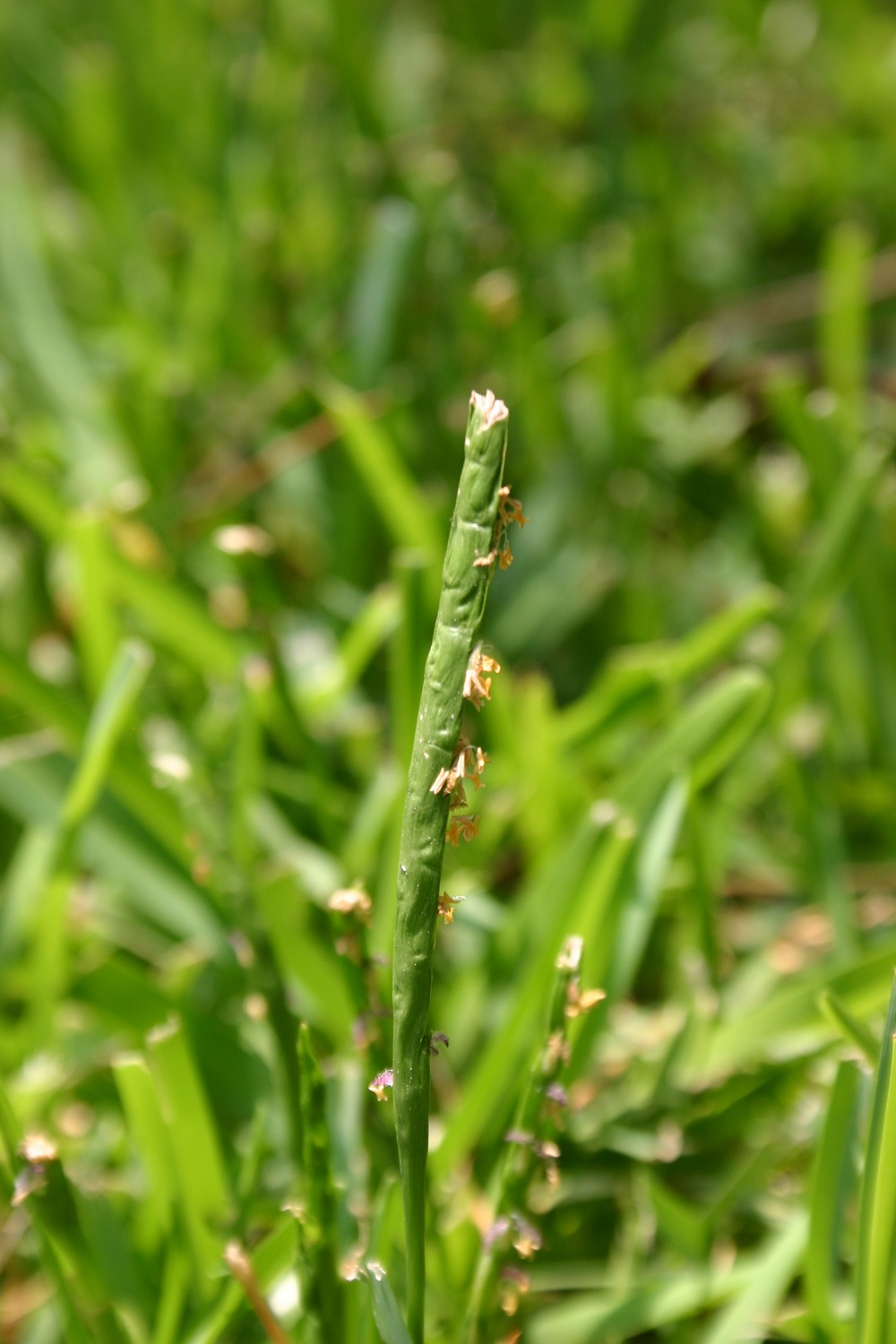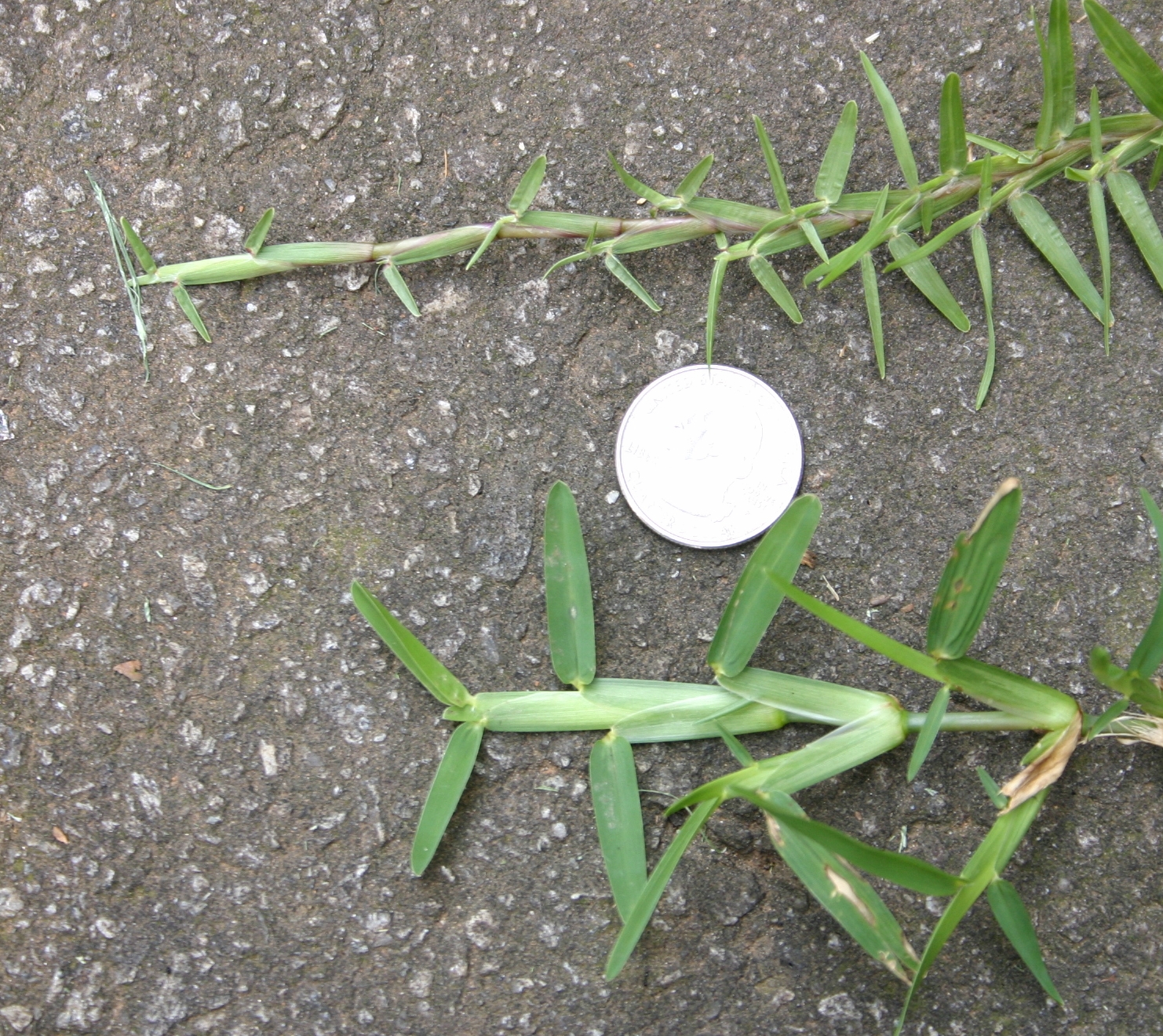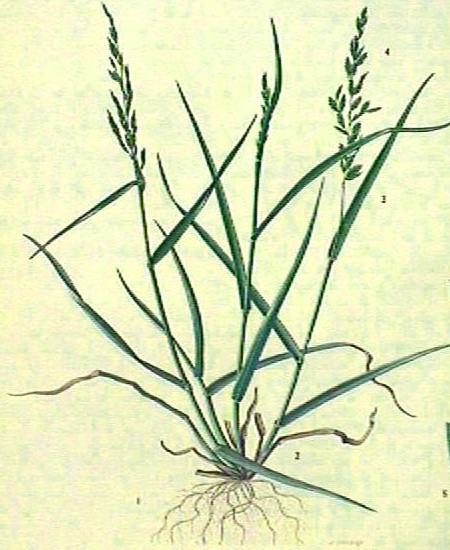Turfgrasses (Lawn Grass) – Identifying

Unlike trees, which have distinctive leaves, or blooming plants, which have distinctive flowers, turfgrass identification is much more difficult for the amateur.
There are five major lawn grasses grown in Georgia. Following are characteristics that will help you distinguish them:
TALL FESCUE is green throughout the year but tends to yellow a bit during summer heat. Leaves are one-eighth to one-fourth inch wide. Forms clumps, does not send out runners. In winter, it is the only green lawn grass as compared to bermudagrass, zoysiagrass, centipedegrass or St. Augustinegrass.
Fescue images:
Tall Fescue Management
NCSU Image Gallery (scroll to the bottom)
BERMUDAGRASS is green in summer and light brown (dormant) in winter. It is usually low-growing, dense in foliage and has thin blades (leaves). Is green from mid-spring to mid-fall. Leaves are one-sixteenth to one eighth-inch wide. Sends out runners. Common bermudagrass quickly invades flower beds.
CENTIPEDEGRASS is gray-green from late spring to mid-fall and dormant in winter. It is usually a lighter green than other turfgrasses in summer. Stems creep along the ground. Leaves emerge from the stem opposite of each other (not alternately, like St Augustinegrass) and turn at right angles to the initial leaf within the first inch of leaf length. Turns “dirty” brown during cold months. Leaves are one-eighth inch to one-fourth inch wide. Sends out runners but is not considered invasive.
ZOYSIAGRASS is green in summer and brown in winter. It is usually the latest of the winter-dormant grasses to turn green in spring. Turf feels “spongy” when you walk on it, compared to the “hard” feel of bermudagrass. Turns golden brown during cold months. Leaves are one-sixteenth to one eighth-inch wide. Slowly sends out runners but is not invasive.
Zoysiagrass – Pictures of different Varieties
ST AUGUSTINEGRASS is green in summer and light tan in winter. In the milder parts of Georgia it may only turn light green for winter. Stems creep along the ground. Leaves may emerge opposite or alternately from the stem (not always opposite of each other, like centipedegrass). Leaves can also emerge along only one side of the stem. They turn at right angles to the initial leaf within the first inch of leaf length.
RYEGRASS is green from mid-fall to mid-spring. Dies during hot months. Leaves are one-sixteenth to one eighth-inch wide. Grows in a clump. Often used to overseed bermudagrass lawns to make them green during the winter.
Ryegrass image (scroll to the bottom)

bermuda seedhead
























